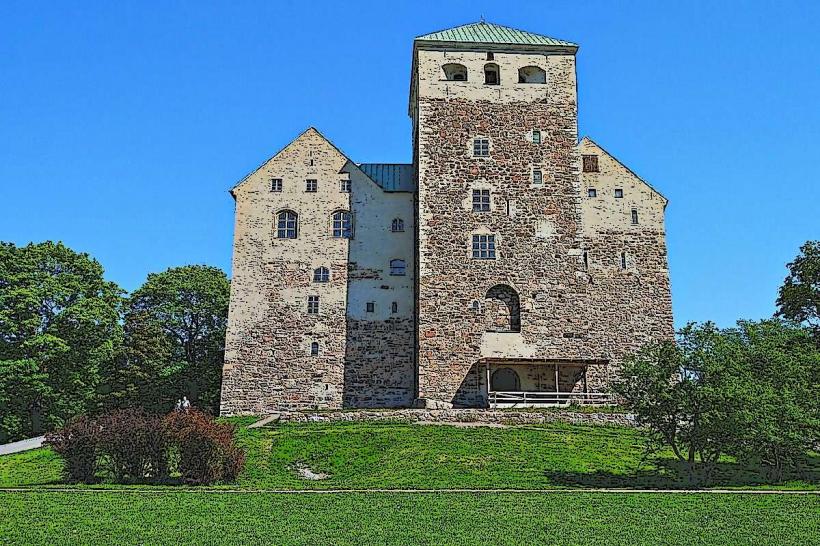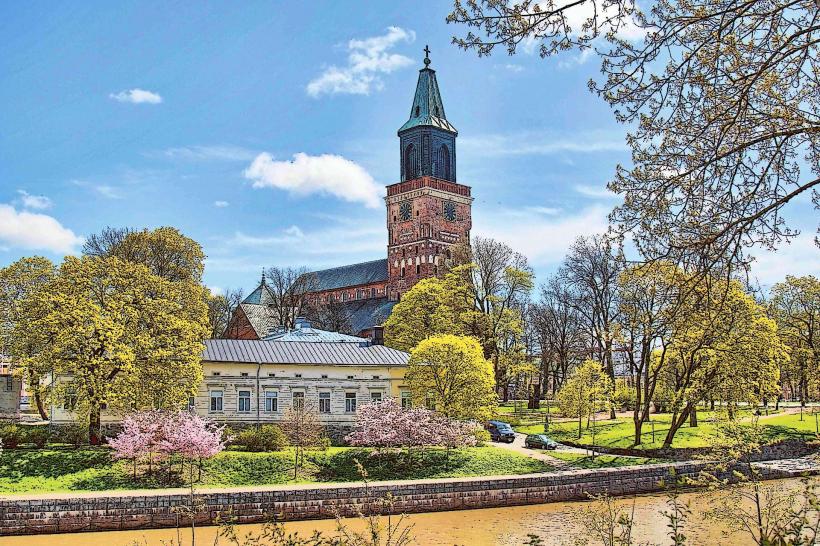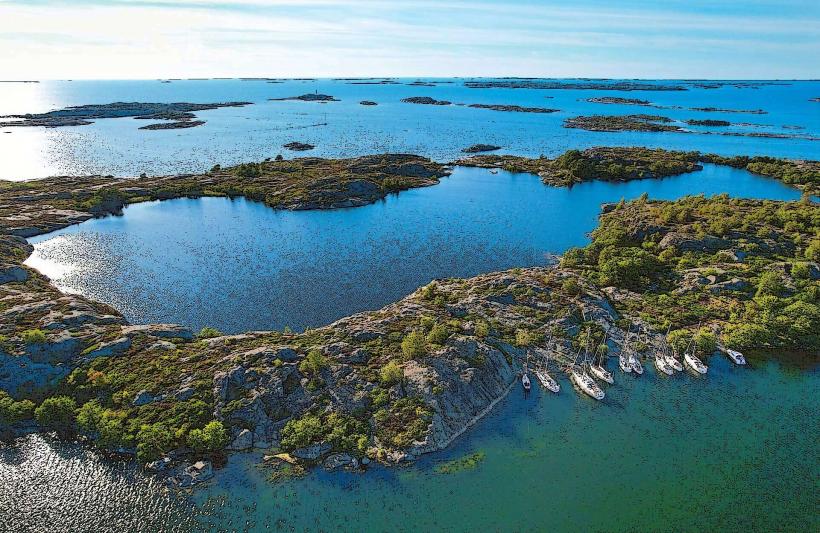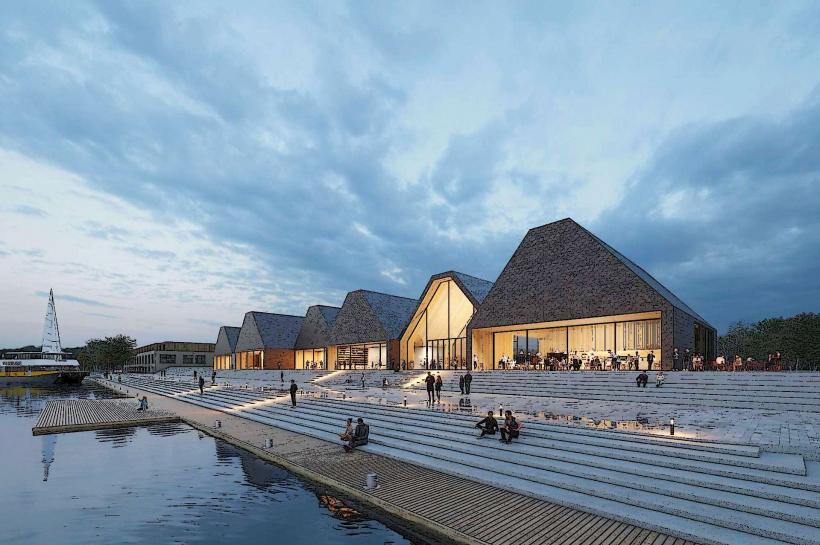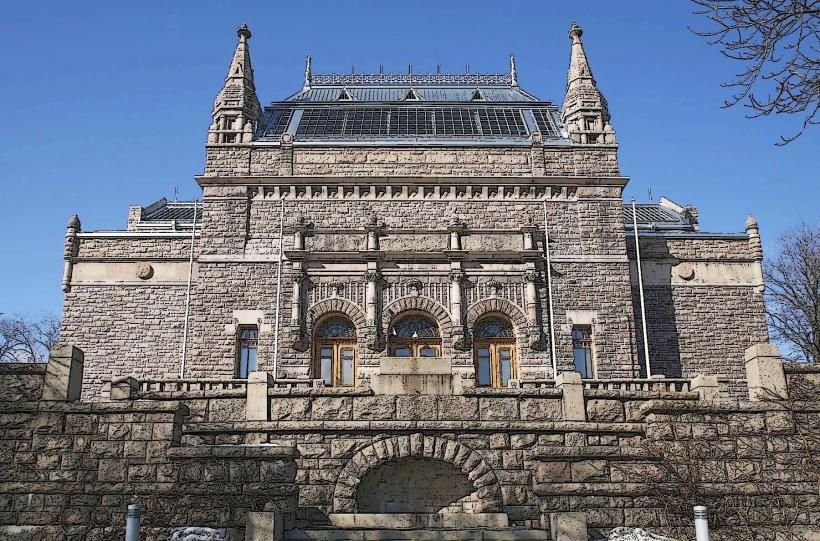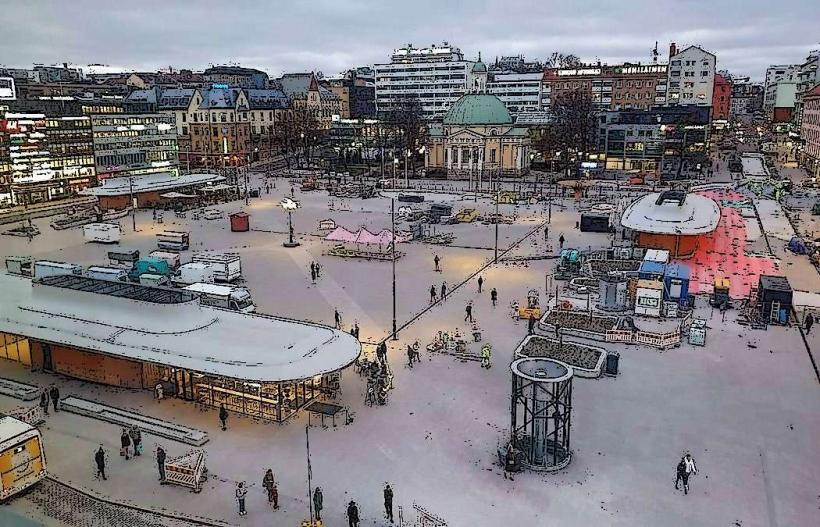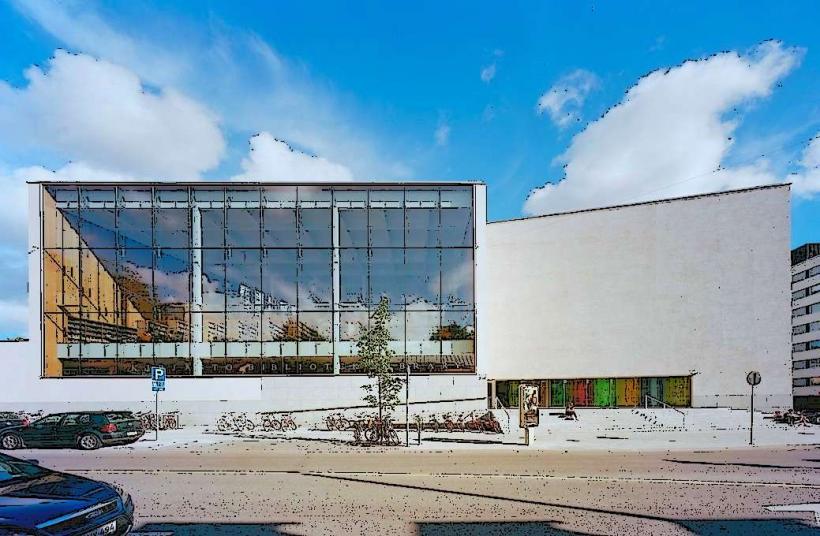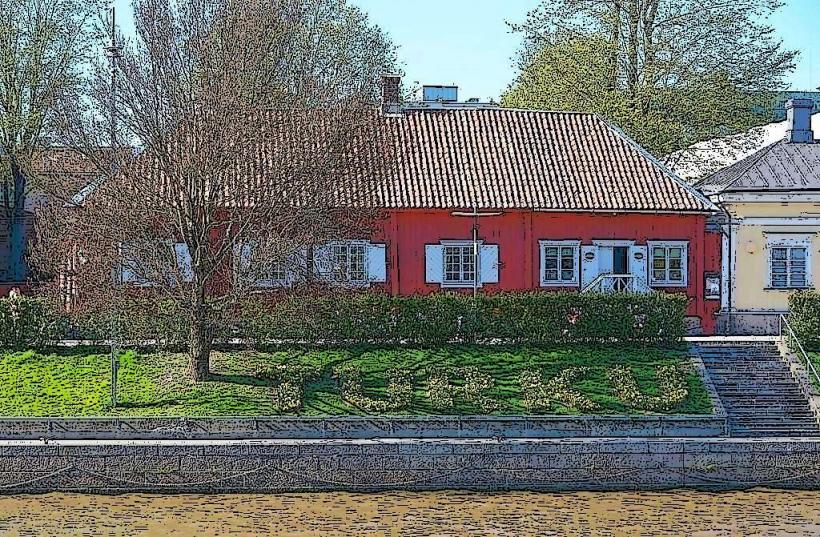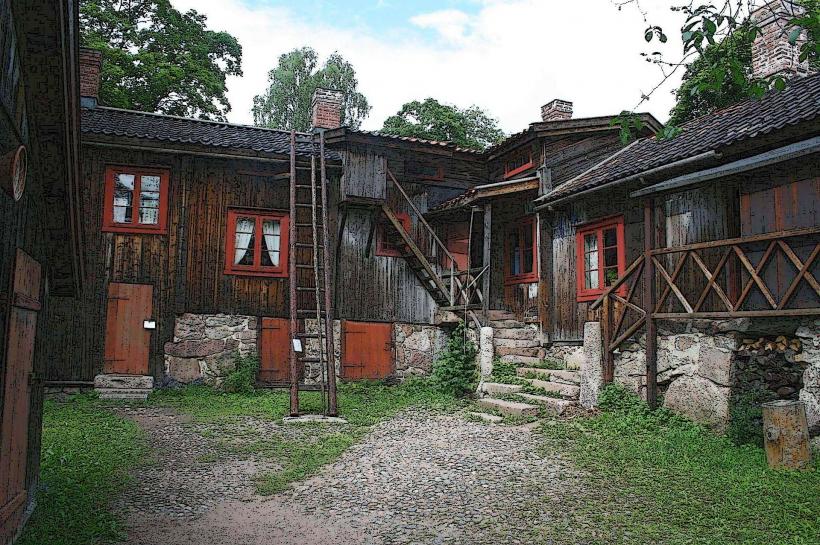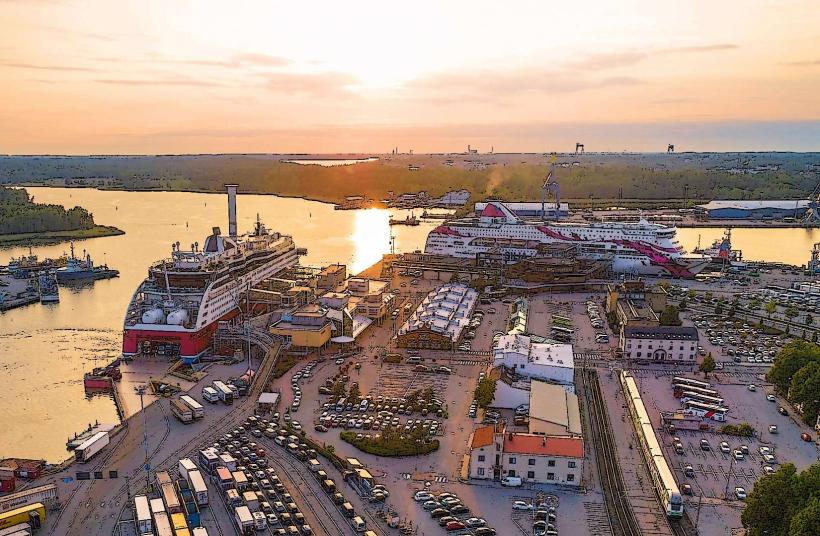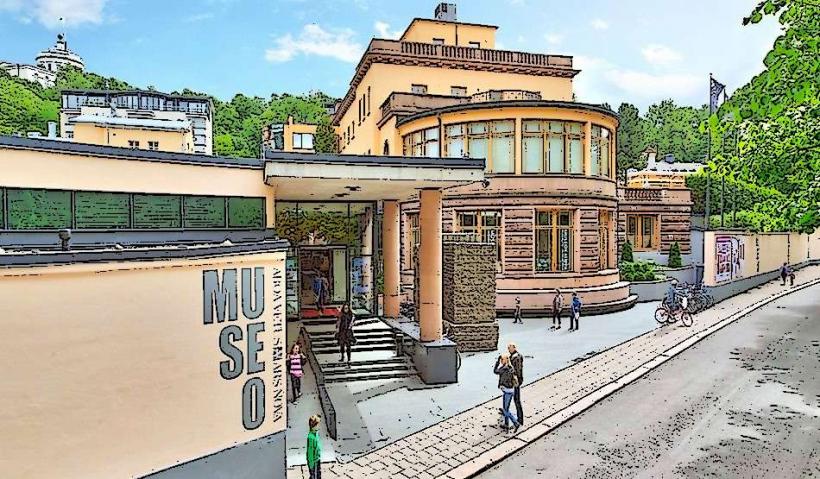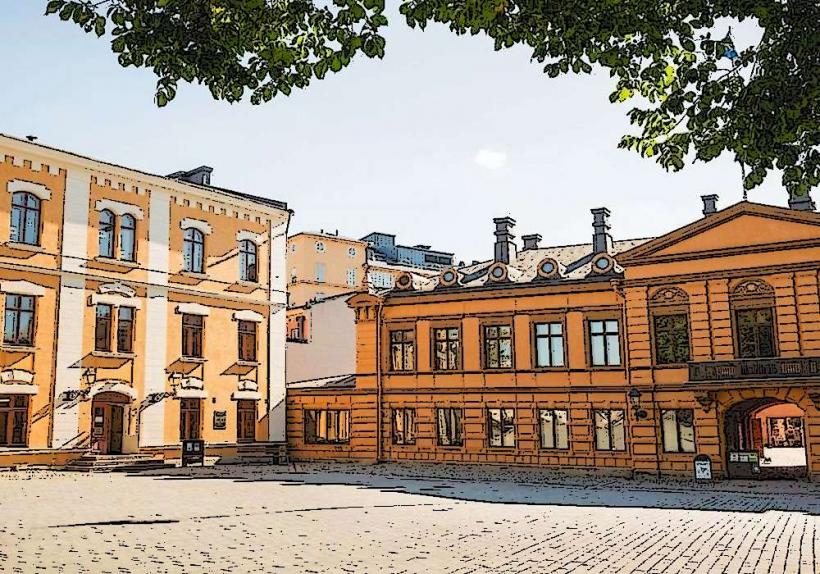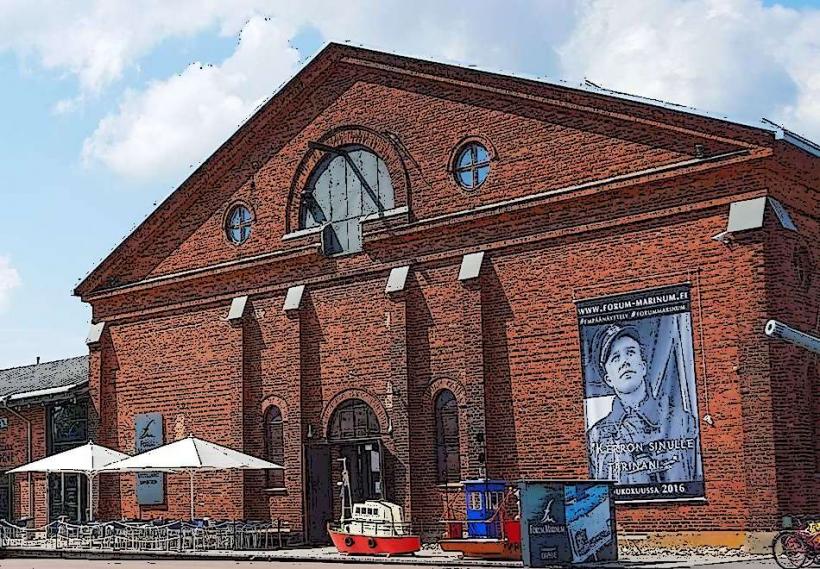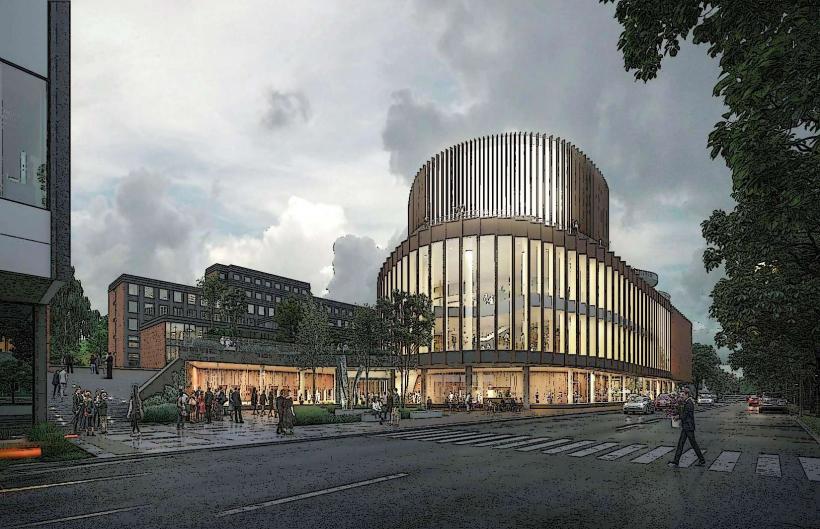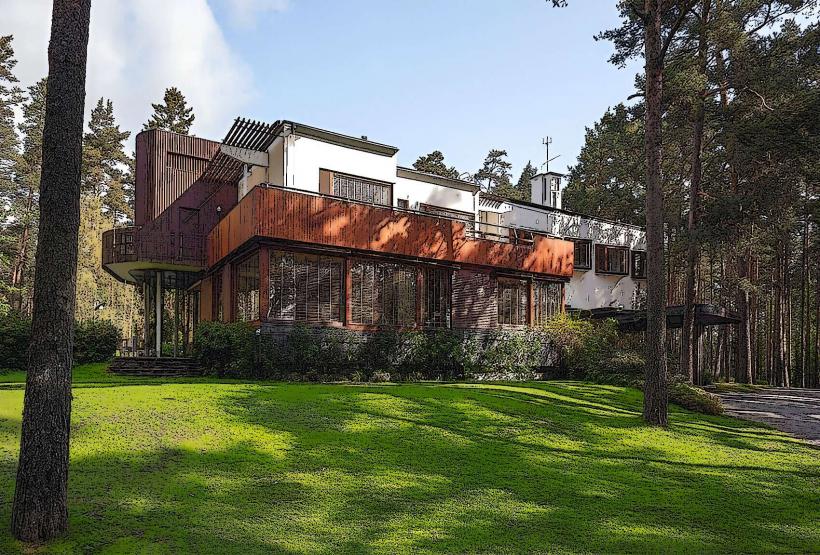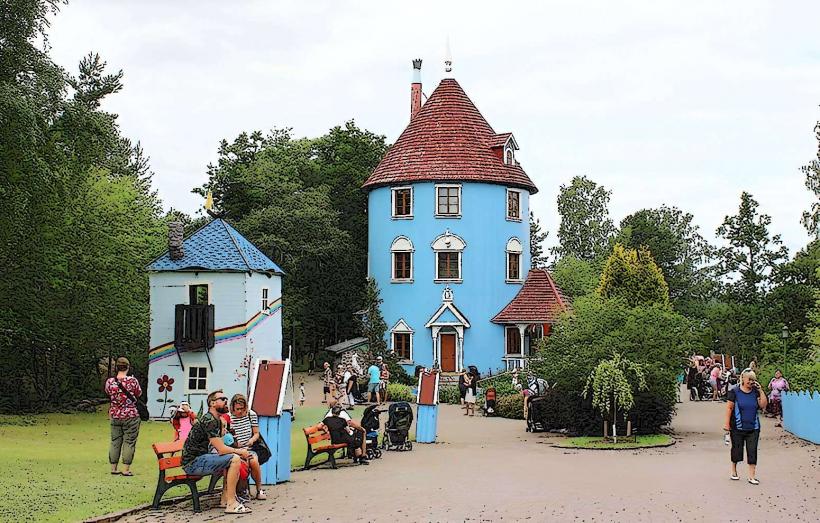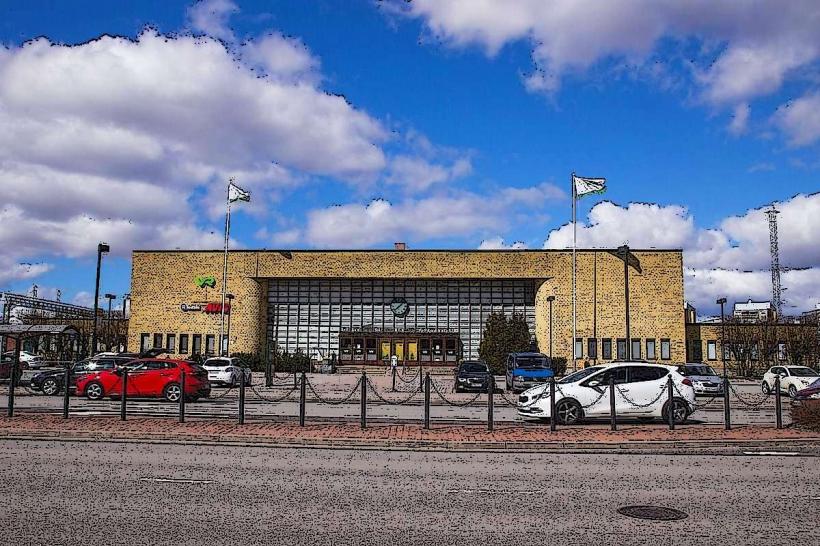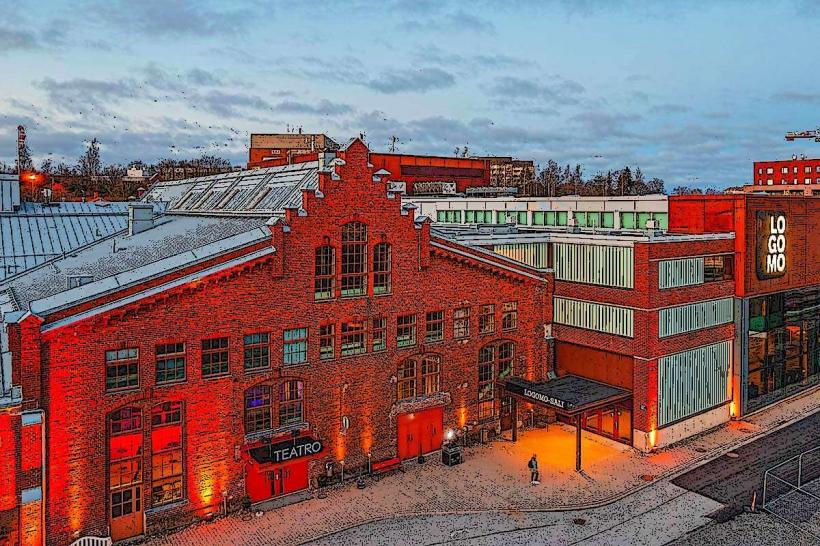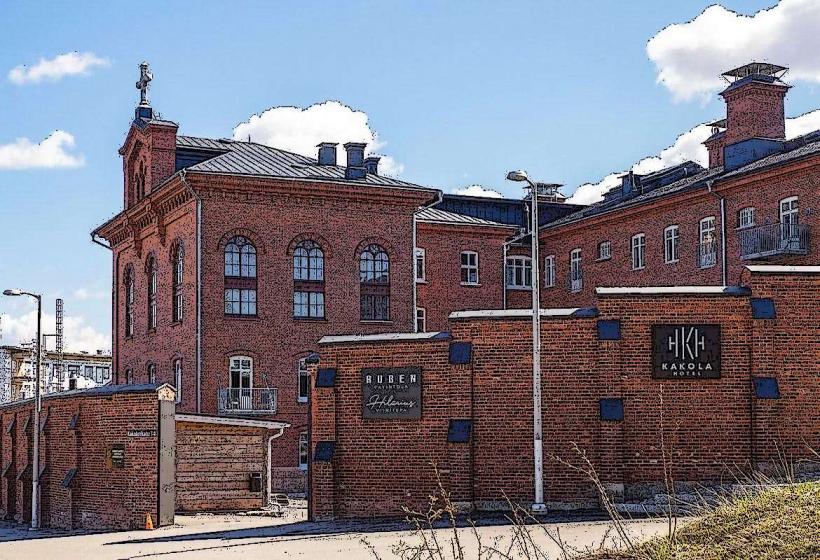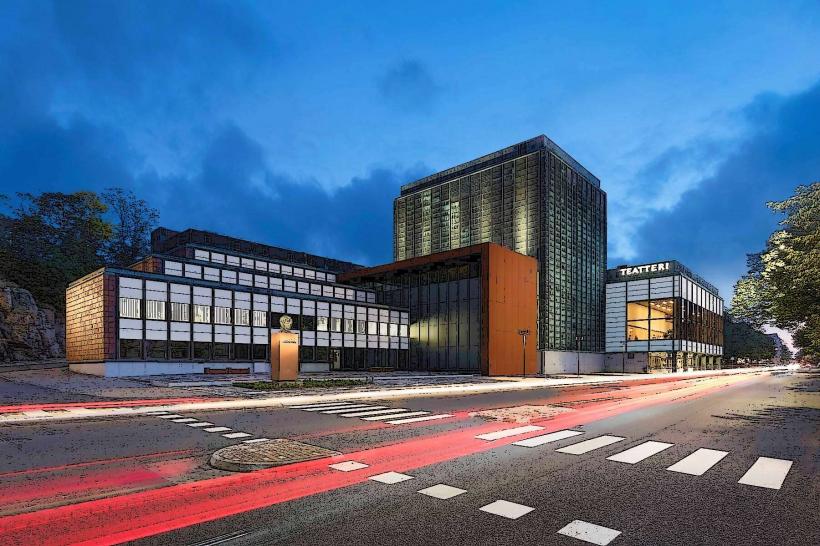Information
Landmark: St. Henry's Ecumenical Art ChapelCity: Turku
Country: Finland
Continent: Europe
St. Henry’s Ecumenical Art Chapel (Pyhän Henrikin ekumeeninen taidekappeli) is a unique and modern architectural and spiritual landmark located near Turku, Finland, specifically on the shores of Lake Kuusisto, about 10 kilometers south of the city center. This chapel is a remarkable blend of art, spirituality, and nature, designed to serve as a place of reflection, prayer, and artistic expression for people of all faiths and backgrounds.
History and Purpose
The chapel was inaugurated in 2005, designed to foster an ecumenical spirit by combining Christian religious traditions with a celebration of artistic expression. It was built in honor of Saint Henry, the patron saint of Finland, and was created to embody an interfaith and inclusive approach to worship and spiritual reflection.
The chapel is not just a place of religious worship but also serves as an artistic venue, integrating art and architecture with the Christian faith. The idea behind its design was to create a space where people from various backgrounds could come together for spiritual reflection, meditation, and artistic inspiration.
Architecture and Design
The architecture of St. Henry’s Ecumenical Art Chapel is minimalist and modern, designed by architect Lassi Lappalainen. The chapel’s structure and the way it interacts with the surrounding nature make it a striking and serene place.
Exterior: The chapel is characterized by its simple and sleek design, which makes use of modern materials like wood, stone, and glass. It features a roof that resembles the shape of a boat, symbolizing a vessel of faith, and the building blends harmoniously with the natural landscape around it.
Integration with Nature: The chapel is situated in a picturesque, tranquil setting, surrounded by the beauty of Lake Kuusisto and the surrounding forests. The natural environment plays an important role in the overall spiritual experience, with large windows and open spaces designed to connect visitors with the surrounding landscape and light.
Interior: The interior of the chapel is equally minimalist, with a serene and peaceful atmosphere. The space is designed for meditation and spiritual reflection, and it features art installations, sculptures, and natural elements that invite visitors to pause and contemplate. The chapel’s altar is simple and unadorned, focusing on spiritual devotion rather than grandiosity.
Art and Sacred Space: The chapel itself serves as an artistic installation, with various works of art, such as paintings, sculptures, and other pieces integrated into the chapel’s design. These works often explore Christian themes but also reflect broader, universal spiritual messages.
The Role of Art
One of the defining aspects of St. Henry’s Ecumenical Art Chapel is its emphasis on the relationship between faith and art. The chapel hosts art exhibitions and cultural events, regularly showcasing works by Finnish and international artists that engage with themes of spirituality, human existence, and the connection between nature and the divine.
Art Exhibitions: The chapel functions as an art space, often hosting rotating exhibitions that blend religious themes with contemporary art. The artwork within the chapel is intended to provoke thought and invite visitors to contemplate faith, the human experience, and nature’s role in spirituality.
Interfaith Dialogue: The chapel is ecumenical, welcoming people from various Christian denominations and different faiths to engage with the art and spiritual atmosphere. Its inclusive nature encourages reflection on shared values and the universal nature of spirituality, fostering dialogue between different religious traditions.
Spiritual and Cultural Activities
In addition to serving as a peaceful space for prayer and reflection, St. Henry’s Ecumenical Art Chapel is also a hub for spiritual and cultural activities. These include:
Services: The chapel regularly hosts Christian services, such as Holy Communion, Vespers, and other liturgical ceremonies, while maintaining an open approach to various denominations.
Concerts and Performances: The chapel is a venue for musical performances, particularly those with spiritual or sacred themes, such as choir concerts, organ music, and solo performances. These events contribute to the serene and contemplative atmosphere of the chapel.
Meditation and Reflection: The chapel is often used for private meditation, spiritual retreats, and reflective moments, where individuals can connect with their inner thoughts and seek peace away from the busyness of daily life.
Workshops and Seminars: St. Henry’s also hosts workshops and seminars on topics related to faith, art, and spirituality, aimed at fostering a deeper understanding of the interconnections between creativity and devotion.
Visitor Experience
Visitors to St. Henry’s Ecumenical Art Chapel often speak of the deep sense of peace and serenity that the space evokes. The combination of art, nature, and spirituality creates an environment that encourages contemplation and personal reflection. Whether you are seeking a place for prayer, artistic inspiration, or simply a quiet retreat in nature, the chapel offers a unique and enriching experience.
Accessibility: The chapel is open to visitors year-round. Though it is a relatively remote location, it is accessible by car from Turku, making it a peaceful escape from the city. Visitors can explore the surroundings and enjoy the calm atmosphere provided by the lake, forest, and the chapel itself.
Opening Hours: The chapel typically operates during specific opening hours, and it is recommended to check the chapel's website for up-to-date information on its schedule, especially for services, exhibitions, and special events.
Free Entry: While entry to the chapel is usually free, some events or exhibitions may have an admission fee.
Conclusion
St. Henry’s Ecumenical Art Chapel stands as a distinctive example of modern religious architecture in Finland, where art, spirituality, and nature converge to create a space of deep reflection and connection. Its commitment to being ecumenical and welcoming to all visitors—regardless of religious background—makes it an important and unique cultural and spiritual site. Whether you are visiting for its art, to experience its calm environment, or to reflect in a spiritual setting, the chapel offers a profound opportunity for personal growth and contemplation.

